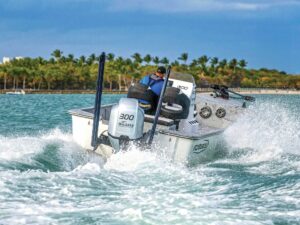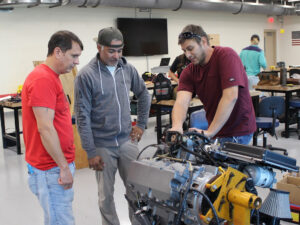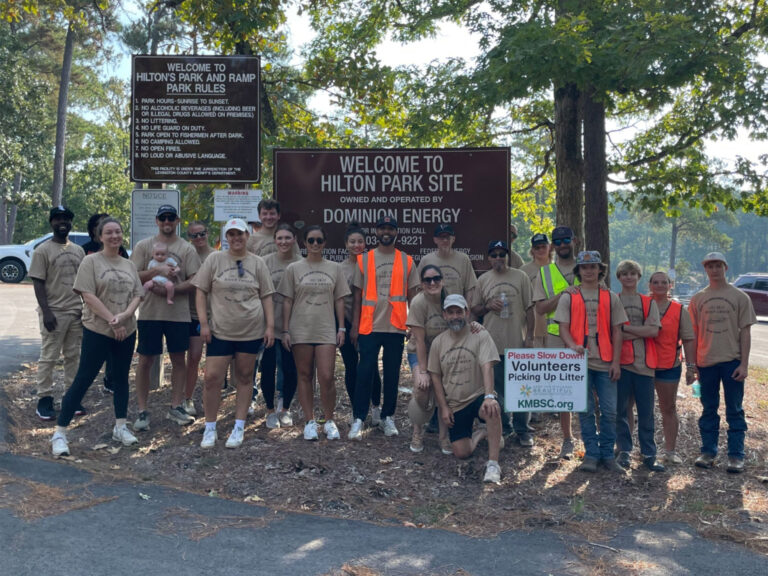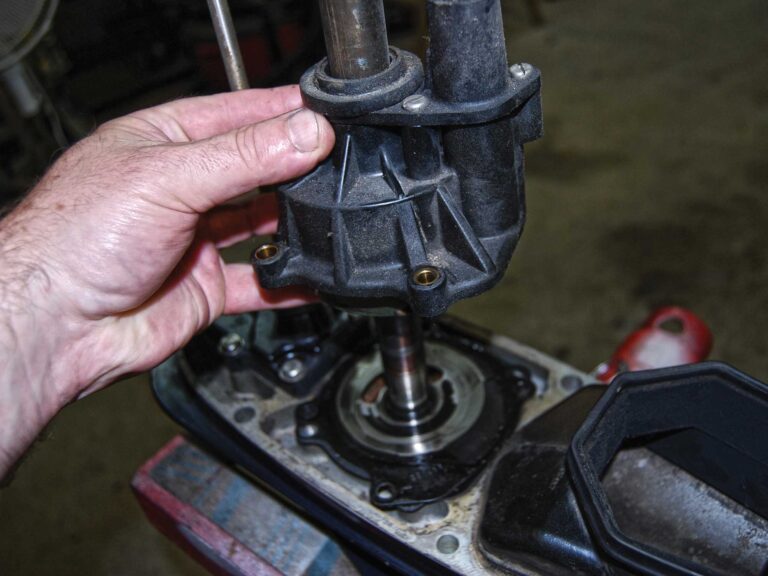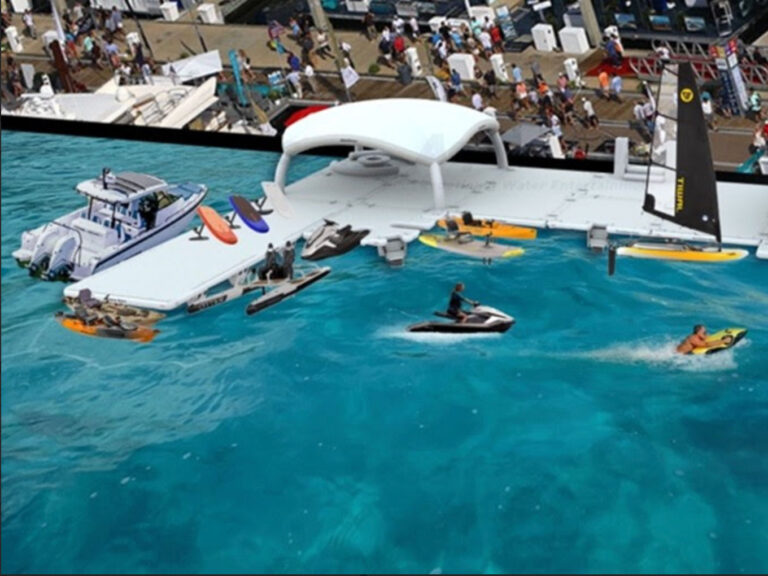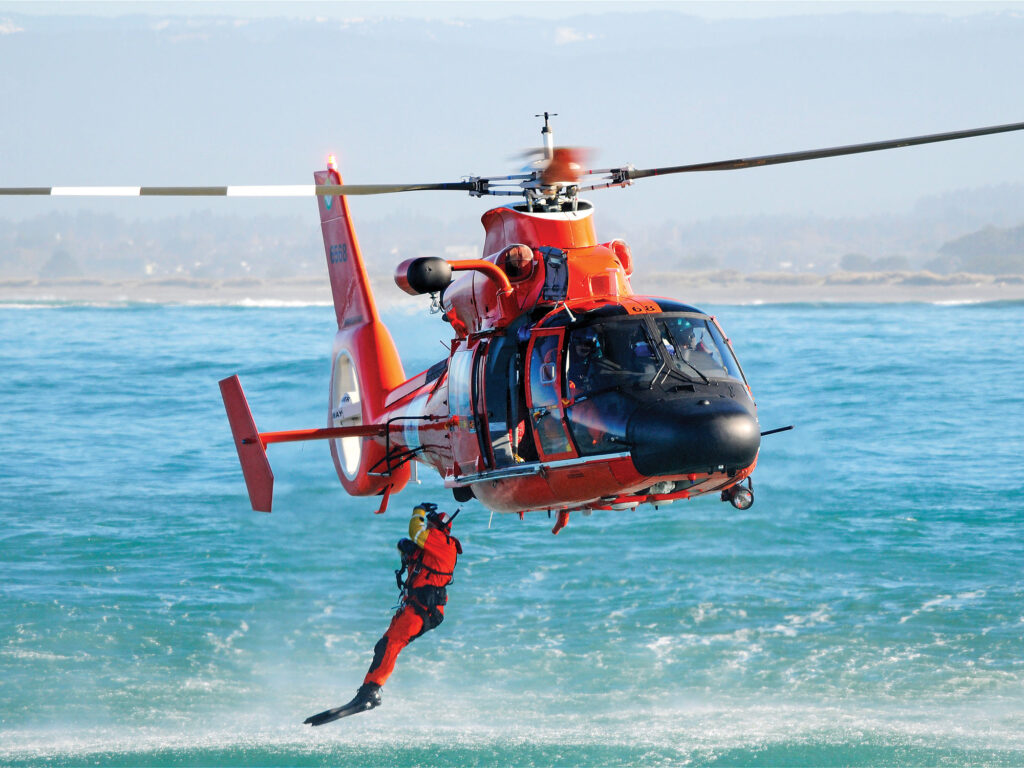
Semper Paratus—Always Ready: That motto of the US Coast Guard prepares its helicopter air crews to fly into merciless winds, blinding snow, impenetrable fog and sheeting rain—weather most aircraft avoid by necessity—whenever boaters and commercial mariners need help farther away and faster than Coast Guard vessels can provide. At the end of that helicopter lifeline, rescue swimmers lower to the deck or leap into the ocean to help resolve what is surely the lowest point of someone’s worst day on the water.
This October marks 40 years since the Coast Guard Authorization Act of 1984 established the rescue swimmer program. These incredibly brave men and women, officially known as Aviation Survival Technicians, are not satisfied with success either. Helicopter rescue capabilities expand each time a previously unimaginable scenario shows where improved equipment or training could make their mission better, safer, or broader ranging. I spoke with three rescue swimmers, whose collective Coast Guard careers span the program’s full 40 years, to understand these extraordinary capabilities. Like them, let’s jump right in.

Early Days
In the earliest days of helicopter rescue, Coast Guard crews stayed in their aircraft and lowered rescue baskets for victims to assist themselves. A few trained and equipped themselves to go into the water modeled on US Navy, Air Force and Canadian rescuers who retrieved downed military pilots, but neither money nor resources came from Coast Guard headquarters to take those programs nationwide.
But then in winter 1982, an Air Florida 737 crashed into the icy Potomac River; a year later, the 605-foot bulk carrier Marine Electric sank 30 miles off the Virginia coast. Many of the 105 who died simply couldn’t rescue themselves in the near-freezing water. The Coast Guard was quick to act, utilizing the Navy’s helicopter rescue training program to field five Coast Guard rescue swimmers in fall 1984: Steve Ober, Kelly Gordon, Rick Woolford, Matt Fithian and Butch Flythe.
“When I joined the Coast Guard in 1984, there wasn’t a rescue swimmer program. We were there to maintain the safety equipment,” says Tom Dardis, who now works as a civilian heading the Coast Guard’s recreational-boating safety outreach program. In November 1986, fresh from swimmer school, Dardis was among the first group of Coast Guard rescue swimmers assigned to Sitka, Alaska. Their initial training focused on physical and mental endurance, but the US Navy program taught them to rescue trained pilots, not scared boaters. In Alaska, Dardis says, “we were figuring things out more by trial and error than from a master plan.”
Pilots also didn’t want to risk their own crewmen. “In those days, they would put us on a fishing vessel rolling in 30-foot seas for a medevac, or drop us ashore to find a lost hiker,” he says. “They just didn’t want to put us in the water.”
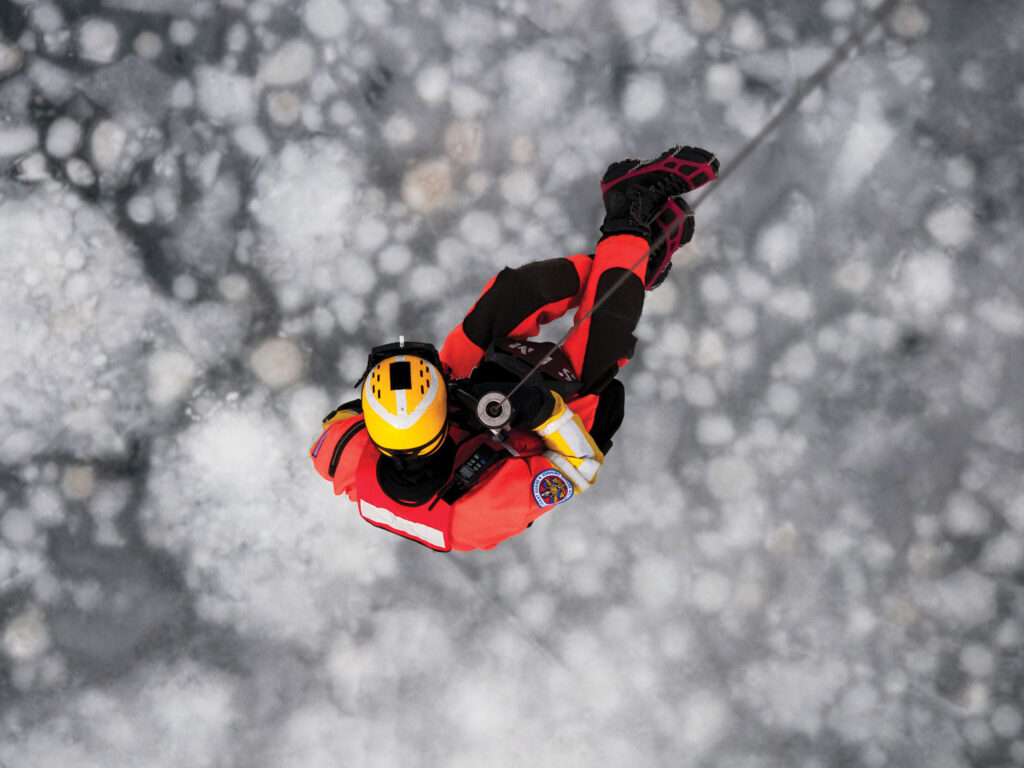
Making the Leap
Jeff Tunks, another rescue swimmer, was on duty the night of December 10, 1987, when a mayday call came that challenged those attitudes. As the Coast Guard’s H-3 Pelican helicopter flew across Sitka Sound and into the not-forecast, rapidly intensifying storm, seas built to 40 feet and winds topped 70 knots. As they arrived on scene, the 26-foot salmon fishing vessel Bluebird, holed by rocks and foundering, cast a father and his 6-year-old son into the frigid water. Blinding snow and vicious gusts left the pilot, John Whiddon, unable to dodge the savagely swaying mast to reach them with the rescue basket. In the minutes it took for the boat to fully sink out of the way, the father, whose survival suit had leaked, was too hypothermic to help himself or his son.
In that moment, Tunks became the first rescue swimmer deployed into the water in anything close to those conditions. Father and son were saved two weeks before Christmas. The aircraft was out of commission for a week to repair its overstressed transmission and damaged airframe. All four airmen, including co-pilot Greg Breithaupt and flight mechanic Carl Saylor, earned the Coast Guard’s Distinguished Flying Cross. And rescue swimmers proved their worth.
Pilots, over time, gained trust in swimmers’ abilities through routine training in marginal but safe conditions, as well as rescues in worse. Then, in mid-March 1993, a southerly dip in the jet stream injected moist tropical air into an already powerful winter storm. The resulting “Storm of the Century” blasted the entire East Coast with hurricane ferocity. The Coast Guard saved more than 100 lives then, many in conditions rivaling Tunks’ Bluebird rescue.
Three weeks later, two brothers were hiking along the water on Oregon’s rugged coast. Rising tides and heavy surf swept them off the rocks and into the enormous cavern carved into Cape Lookout’s cliffs. Rescue swimmer Triston Heaton followed.
“A rescue swimmer had never done that before,” says Eric Biehn, who began as a rescue swimmer himself in 1999 and now ensures that all rescue swimmers have the equipment, training and resources they need for their mission. “Triston Heaton didn’t know about cave hydraulics and the ways that waves and tide affected them, or the dangers of deadheads and debris. Once he was in the back of the cave, he experienced all of that, and he almost died.”
To reach Heaton and the brothers trapped by the sea, pilot Ed Gibbons and co-pilot Blake Burris flew their H-3 Pelican, with a 62-foot rotor span, into the 200-foot-wide enclosed cave. Flight mechanic Craig Wyatt used breaking waves to float the rescue basket farther in, and the helicopter dragged Heaton and one of the men out through the breaking surf.

School’s In
Recognizing the need to train for such difficult cases, the Coast Guard launched Advanced Rescue Swimmer School in Astoria, Oregon, in 1996. “Now we experience swimming into a cave and back out, both tethered to the helicopter and untethered, so we know how and when we can do it safely,” Biehn says.
They spider-crawl across cliffs to rescue fallen hikers, suspended by their helicopter’s stainless-steel cable like a web. Hurricanes Katrina and Harvey augmented urban rescue training. And of course, they train extensively in the notoriously frigid, rough waters off Oregon’s coast. In 2007, the renamed Advanced Helicopter Rescue School expanded its curriculum to incorporate training specific to pilots and flight mechanics. Navy and Air Force rescuers now utilize Coast Guard AHRS too, coming full circle since the early days when Coast Guard swimmers attended Navy training.
Justin Gieringer has been to AHRS three times so far over his 14-year career; rescue swimmers attend at least once every five years. Training in those conditions hones skills such as deploying a rescue basket buffeted by breaking waves. “At the beginning of the first day [of training in big seas], all the hoists take forever, but by the end of the day, everything goes just like when we’re in flat water,” Gieringer explains.
Read Next: US Coast Guard MH-65 Dolphin Helicopters
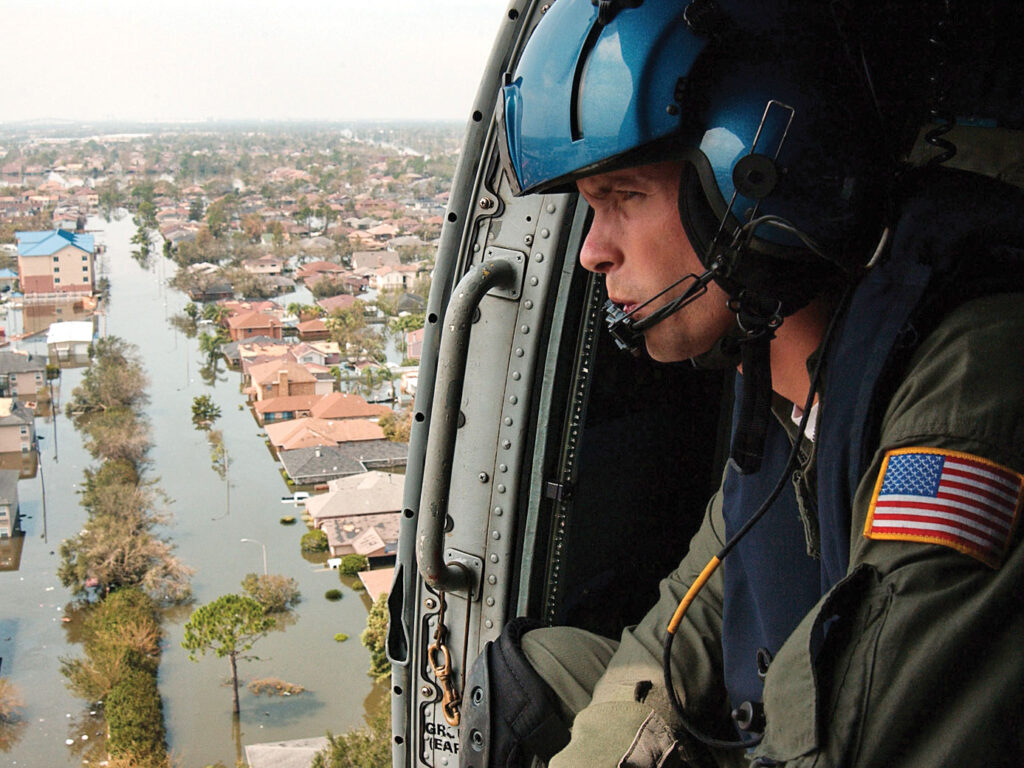
Teamwork benefits most. “There is a moment right before my feet hit the deck where I have no control but I’m most vulnerable. It’s like jumping off a building without knowing where the ground is,” Gieringer says. “I’m giving my hand signal nice and slow, and the flight mechanic is letting out the cable slowly, and then he drops it as fast as he can just as my tippy-toes hit the deck.” Practicing that moment in challenging conditions makes it smooth. Keeping hoist cables slack but not loose in big waves or strong winds is another learned skill, as is reading and reacting as a team to the constant updrafts and downdrafts that pilots experience when hovering near cliffs and tall buildings. “The cliff and heavy-surf training are awesome, but the cold-water training is so important to suffer through,” Gieringer says of 40-degree seawater during AHRS, which new rescue swimmers stationed in warmer climates haven’t yet experienced. “Doing all these things with the added stress of cold water, especially when a helicopter comes over with that rotor wash, is eye-opening.”
Rescue swimmers also train to the level of EMTs. Gieringer put those skills to an extreme test in November 2022 when three US Border Patrol agents were each shot multiple times during a drug interdiction 20 miles south of the Puerto Rican coast. Gieringer and another rescue swimmer, Dan Wilson, were fortunately already aboard a helicopter preparing to lift off for a scheduled training flight. “We were on scene in maybe 10 minutes,” he says. Two agents were still conscious but critical. “Dan hoisted them and took off straight to the trauma center in San Juan.” With a second helicopter just minutes out, Gieringer tended to the third agent, who had been shot in the chest, neck and forehead, but he still had a pulse and was clinging to life. “I’m packing the wounds, applying an Israeli bandage (tourniquet), and he’s still bleeding out,” he says. The third agent was already secured into the litter when the second helicopter arrived. To save critical minutes and continue resuscitation all the way to the helicopter, Gieringer rode up alongside his victim rather than in a separate hoist—a technique he recently acquired in advanced training—and then he and fellow swimmer Casey Hanchette performed CPR for the 20-minute flight to Mayagüez.
The good guys don’t always win. Gieringer couldn’t save that most critically wounded Border Patrol officer. Two brothers were swept into that Cape Lookout cave, but Heaton never found the second. And 38 Coast Guard aviators have lost their lives in the line of duty since 1984.
“We train hard ‘so others may live’—that’s our motto,” Biehn says. “To get through the training, and during all that dedicated suffering, we always have in the back of our minds, we are doing this for a purpose, and that purpose is to save lives.”
Rescue swimmers are not held up as heroes within the Coast Guard but rather are considered an integral part of the rescue team. “We’ve had two or three generations to figure this out,” Dardis says. “With any training—military, police, fire—we should all act the same because of that training. Given a scenario, nine out of 10 rescue swimmers would react the same way.”
In other words, every pilot, every flight mechanic and every rescue swimmer, each time they climb into that helicopter, is a trained hero. Some just haven’t had the chance to show it yet.


